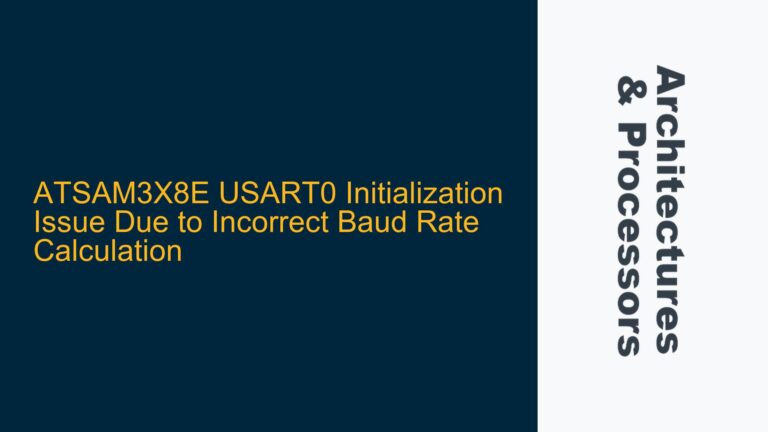Understanding R5F Lockstep Mismatch Errors in Versal PLM
The Versal VCK190 and VMK180 platforms utilize the ARM Cortex-R5F processor in lockstep configuration to enhance fault tolerance and reliability in safety-critical applications. Lockstep mode involves running two identical Cortex-R5F cores in parallel, with their outputs compared in real-time to detect discrepancies. When a mismatch occurs, it indicates a potential fault in the system, which must be captured and handled appropriately. The Platform Management Controller (PLM) in Versal devices is responsible for managing such errors, including generating interrupts to alert the system.
A lockstep mismatch error typically arises when the outputs of the two Cortex-R5F cores diverge due to transient faults, hardware errors, or software anomalies. Capturing these errors as interrupts in the PLM is crucial for implementing fault recovery mechanisms, logging diagnostic information, and ensuring system integrity. However, configuring the PLM to capture and handle these interrupts requires a deep understanding of the ARM Cortex-R5F architecture, the lockstep mechanism, and the PLM’s interrupt handling capabilities.
The challenge lies in ensuring that the PLM is correctly configured to detect lockstep mismatches, generate interrupts, and route them to the appropriate handler. This involves setting up the interrupt controller, configuring the PLM firmware, and ensuring that the system can respond to these interrupts without disrupting critical operations. Additionally, the timing and synchronization between the Cortex-R5F cores and the PLM must be carefully managed to avoid false positives or missed errors.
Potential Causes of Lockstep Mismatch Interrupt Configuration Issues
One of the primary causes of issues in capturing R5F lockstep mismatch errors as interrupts in the PLM is improper configuration of the Cortex-R5F cores. The lockstep mechanism relies on precise synchronization between the two cores, and any deviation in their execution paths can trigger a mismatch. This can occur due to incorrect initialization of the cores, misconfigured memory regions, or timing discrepancies in accessing shared resources. Ensuring that both cores are initialized identically and operate in perfect lockstep is critical to avoid spurious mismatches.
Another potential cause is the misconfiguration of the PLM’s interrupt handling mechanisms. The PLM must be programmed to recognize lockstep mismatch errors as interrupt sources and route them to the appropriate interrupt controller. This involves setting up the interrupt priorities, enabling the relevant interrupt lines, and configuring the interrupt service routine (ISR) to handle the error. Failure to properly configure these settings can result in missed interrupts or incorrect handling of the error condition.
Timing issues can also contribute to problems in capturing lockstep mismatch errors. The PLM must detect and respond to mismatches within a specific time window to ensure that the error is logged and handled before it affects system operation. Delays in interrupt generation or handling can lead to missed errors or delayed responses, compromising the system’s fault tolerance. Ensuring that the PLM and Cortex-R5F cores are synchronized and that the interrupt handling process is optimized for minimal latency is essential.
Additionally, hardware faults or environmental factors such as voltage fluctuations, temperature variations, or radiation-induced soft errors can cause lockstep mismatches. These factors can introduce transient faults that disrupt the operation of one or both Cortex-R5F cores, leading to mismatches. While these faults are often unavoidable, the system must be designed to detect and recover from them efficiently. This includes implementing robust error detection and correction mechanisms, as well as ensuring that the PLM can handle such faults gracefully.
Configuring PLM to Capture and Handle R5F Lockstep Mismatch Interrupts
To capture R5F lockstep mismatch errors as interrupts in the Versal VCK190/VMK180 PLM, the system must be configured to detect mismatches, generate interrupts, and route them to the appropriate handler. This involves several steps, including configuring the Cortex-R5F cores, setting up the PLM’s interrupt handling mechanisms, and implementing the interrupt service routine (ISR).
First, the Cortex-R5F cores must be initialized and configured to operate in lockstep mode. This involves setting up the memory regions, enabling the lockstep mechanism, and ensuring that both cores execute the same code path. The initialization process must be carefully managed to avoid any discrepancies between the cores. This includes configuring the core registers, enabling the lockstep comparator, and verifying that both cores are synchronized.
Next, the PLM must be configured to recognize lockstep mismatch errors as interrupt sources. This involves setting up the interrupt controller, enabling the relevant interrupt lines, and configuring the interrupt priorities. The PLM firmware must be programmed to detect mismatches and generate interrupts when they occur. This includes setting up the interrupt vector table, enabling the interrupt controller, and configuring the interrupt service routine (ISR) to handle the error.
The interrupt service routine (ISR) must be implemented to handle the lockstep mismatch error. This involves logging the error, performing any necessary recovery actions, and resetting the lockstep mechanism. The ISR must be optimized for minimal latency to ensure that the error is handled promptly. This includes disabling interrupts during critical sections, using efficient data structures for logging, and implementing robust error recovery mechanisms.
Finally, the system must be tested to ensure that the lockstep mismatch errors are captured and handled correctly. This involves running test cases that induce lockstep mismatches and verifying that the PLM generates interrupts and handles them appropriately. The system must be tested under various conditions, including different operating frequencies, temperature ranges, and voltage levels, to ensure that it can handle lockstep mismatches reliably.
In conclusion, capturing R5F lockstep mismatch errors as interrupts in the Versal VCK190/VMK180 PLM requires careful configuration of the Cortex-R5F cores, the PLM’s interrupt handling mechanisms, and the interrupt service routine. By following the steps outlined above, system designers can ensure that lockstep mismatches are detected and handled efficiently, enhancing the reliability and fault tolerance of their embedded systems.






